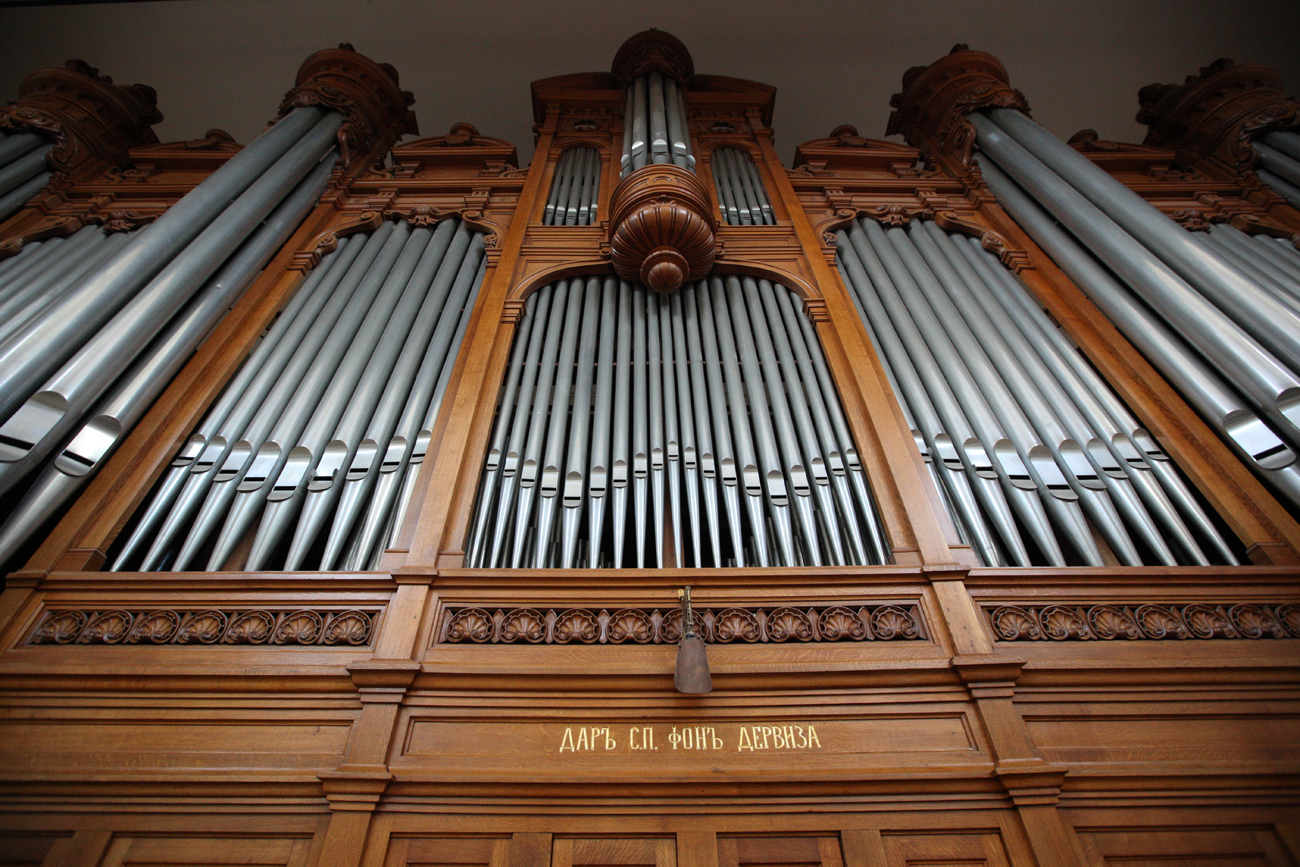
Photo: An organ in the Moscow State Tchaikovsky Conservatory's Grand Hall.
Vladimir Pesnya/RIA Novosti An organ in the Moscow State Tchaikovsky Conservatory's Grand Hall. Source: Vladimir Pesnya/RIA Novosti
An organ in the Moscow State Tchaikovsky Conservatory's Grand Hall. Source: Vladimir Pesnya/RIA Novosti
According to its critics, this organ is not only a wonderful instrument but a brilliant showpiece of Russian musical history. Made in the atelier of Cavaille Coll, the highly-regarded French master, and fitted in 1901, it was the first concert organ in Russia.
It was chosen by Pyotr Tchaikovsky, who was friends with many French musicians at the time; before then instruments were usually ordered from German masters. It was worth several million in gold and was of unusually high quality according to its desginer, who won the Grand Prix in the 1900 Paris World Fair for his creation.
The name of Sergei Von Derwies, the main sponsor of the transaction, is written on the front of the organ. The instrument bears the memory of many famous musicians who have played on it, including the French organist Charles-Marie Widor, the composer Charles Tournemire and the Italian organist and composer Marco Enrico Bossi. A French organist whose name will be publicized at a later date will play the instrument on the day of its inauguration, just like in 1901.
Tatyana Konina performs at the Moscow Conservatory. Source: MoscowConservatory/YouTube
There has been an organ here since the end of the 19th century, but currently in the place of the old one stands a Glatter-Götz organ installed in 2013. In ballet and the opera organ music is quite common: For example, Tchaikovky used the organ in The Maid of Orleans; Verdi in Don Carlos and Othello; and Puccini in Tosca. Organ music can also be heard in Prokofiev’s ballet Romeo and Juliet. Nowadays organ recitals in the Bolshoi are relatively rare.
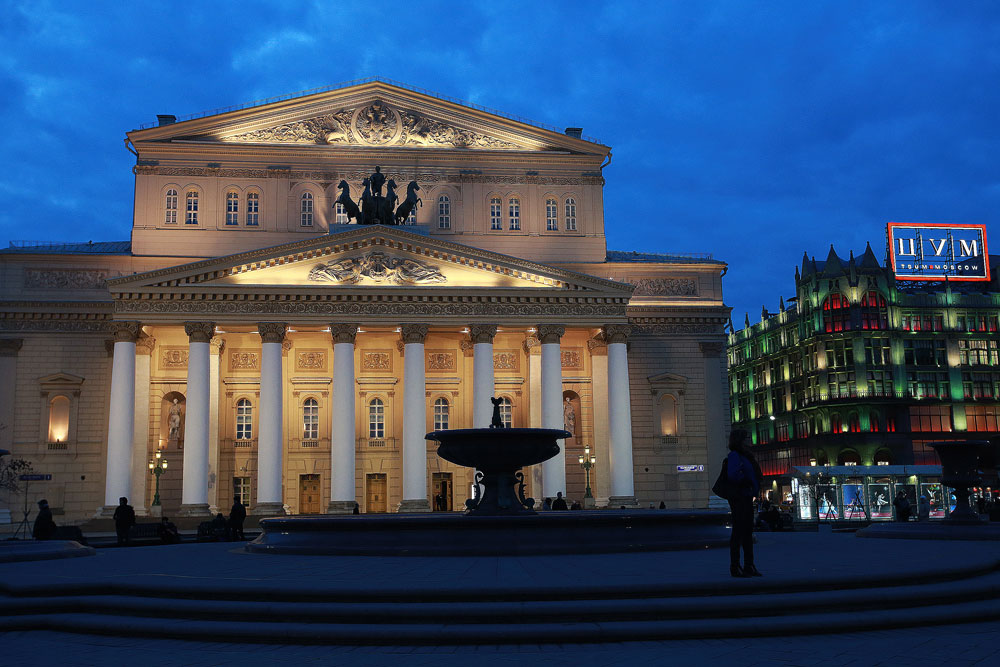 Bolshoi Theater. Source: Sergei Fadeichev/TASS
Bolshoi Theater. Source: Sergei Fadeichev/TASS
One of Moscow’s primary concert organs stands here. The instrument was made by the Rieger-Kloss firm and was brought from Czechoslovakia in 1959; it now stands in itself as a memorial of the Soviet era. Many musical experts believe that it is technically out of date, and the Philharmonic is looking for a new one.
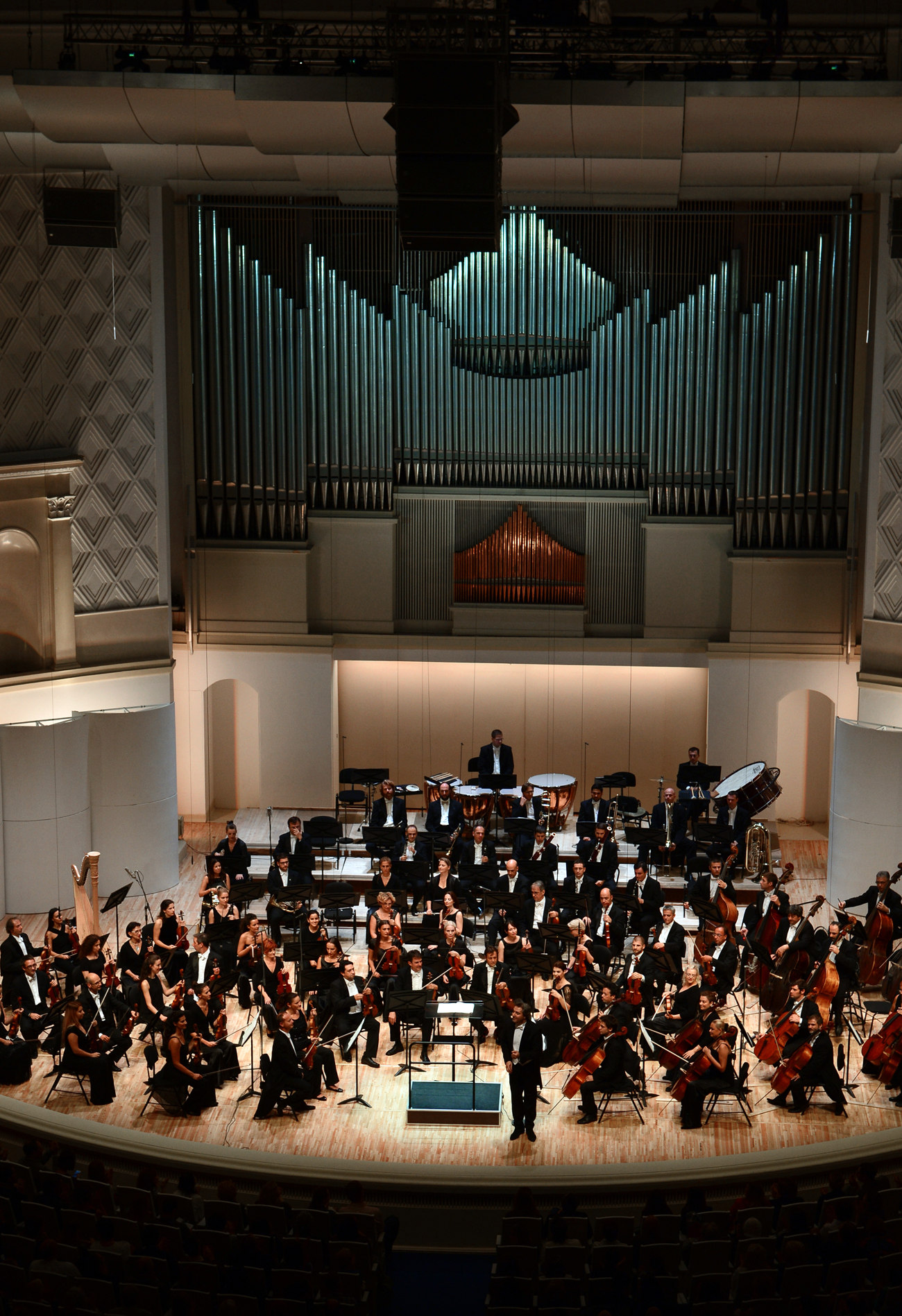 A concert by the Belgrade Philharmonic Orchestra at the Tchaikovsky Concert Hall in Moscow. Source: Vladimir Vyatkin/RIA Novosti
A concert by the Belgrade Philharmonic Orchestra at the Tchaikovsky Concert Hall in Moscow. Source: Vladimir Vyatkin/RIA Novosti
The oldest musical organ in Moscow stands in the foyer of the museum. Built by Friedrich Ladegast in 1865, it was donated by the merchant and philanthropist Vasily Khludovy for the students to practice on at the Moscow Conservatory and was in use for nearly 100 years. Concerts are now played on it once again. In the Prokofiev Hall of the museum there is another baroque organ, prepared and installed by the German firm of Alexander Schuke in 1979. Works by Bach, Buxtehude, Pachelbel and other German composers are the best to play on this organ.
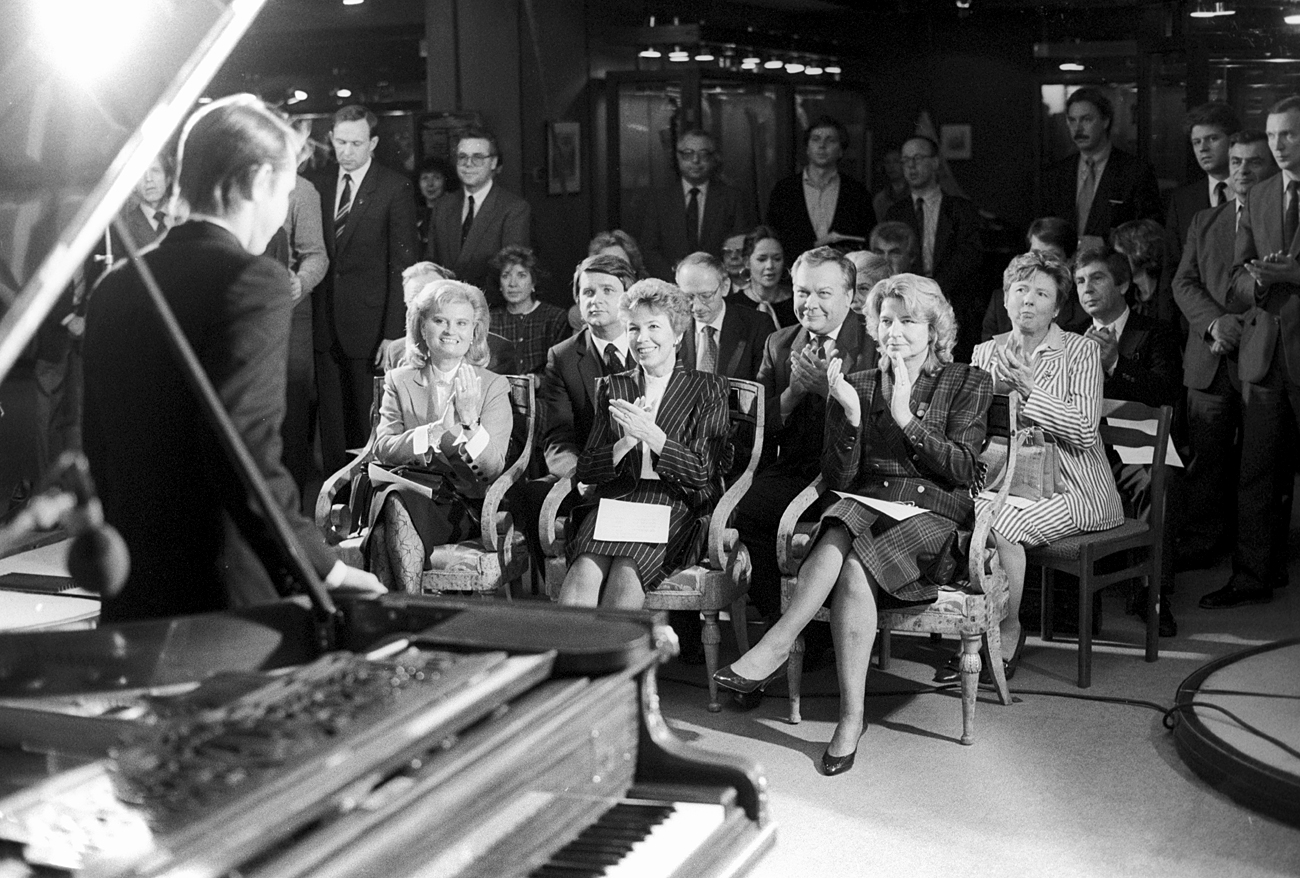 Helmut Kohl's, Federal Chancellor of the Federal Republic of Germany, on his official visit to the USSR visiting the Mikhail Glinka State Museum of Musical Culture. Source: Vitaliy Saveliev/RIA Novosti
Helmut Kohl's, Federal Chancellor of the Federal Republic of Germany, on his official visit to the USSR visiting the Mikhail Glinka State Museum of Musical Culture. Source: Vitaliy Saveliev/RIA Novosti
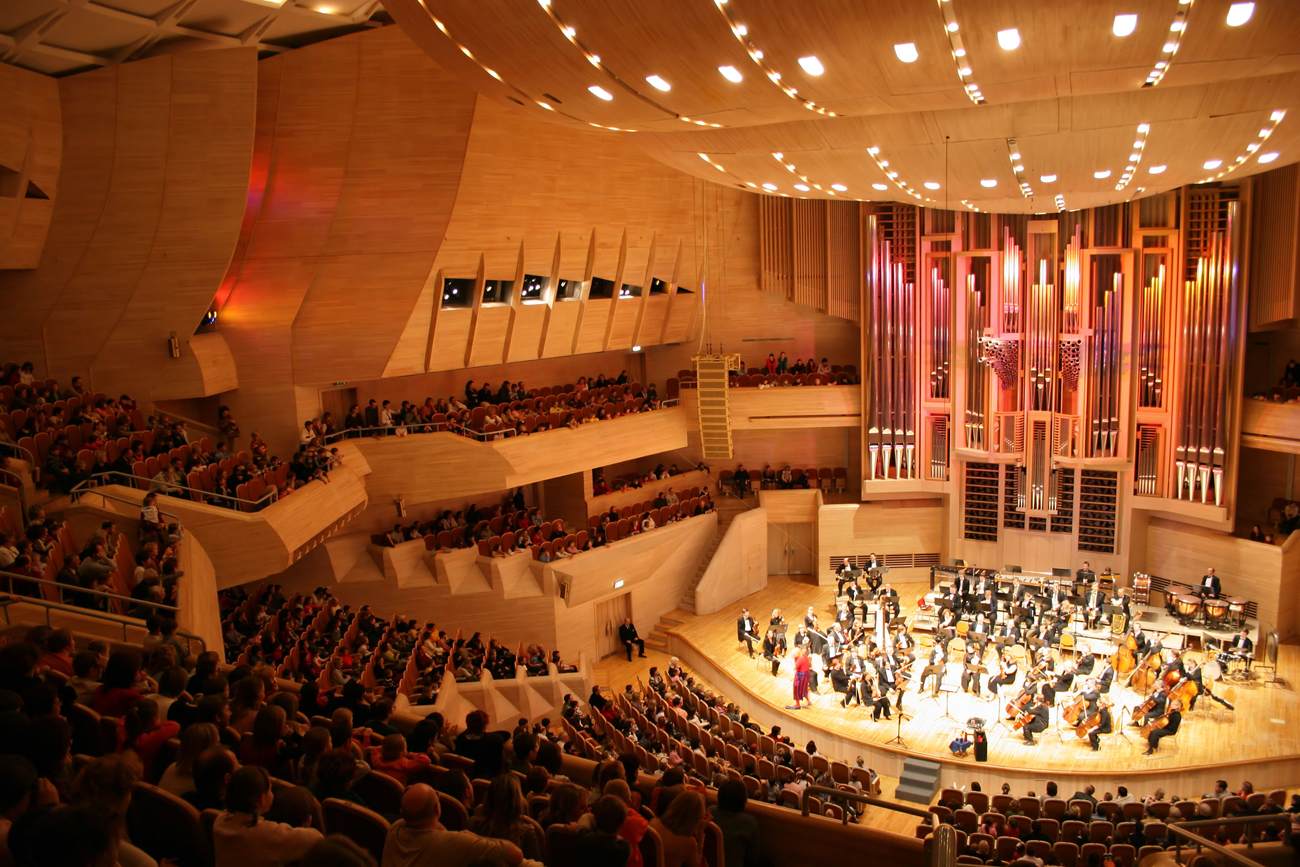 Concert performed at the Moscow International House of Music. Source: Alamy/Legion Media
Concert performed at the Moscow International House of Music. Source: Alamy/Legion Media
The largest organ in Russia is found here. Equipped with unique technological features, it was built by the German consortium firm Klais and Glatter-Götz in 2004. Old music may be played on it but modern romantic melodies provide the most interesting experience. It has unusual registers, such as “whale sounds” and a rare register of the lowest possible frequency – “64 foot” – which recalls the vibrations made by an airplane taking off.
Christmas Gala at the Moscow International House of Music. Source: MrTicketland/YouTube
Organ music has been played here only relatively recently; the German concert organ by Glatter-Goetz was brought here in 2008. The organ gives a certain authenticity to music which is centuries old, and for this reason the concert recitals, where works by old masters are played, are especially popular with lovers of organ music.
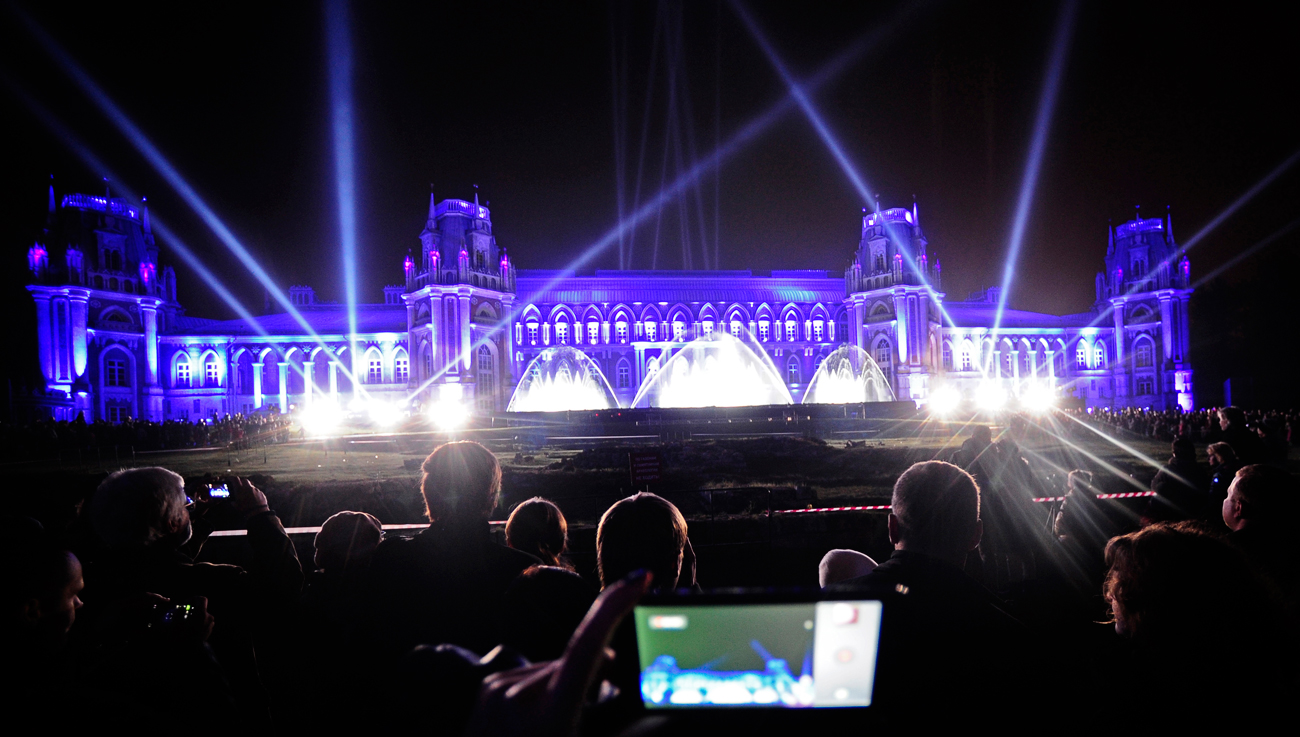 Light projection on the facade of the Grand Palace at Tsaritsyno estate museum. Source: Sergei Bobylev/TASS
Light projection on the facade of the Grand Palace at Tsaritsyno estate museum. Source: Sergei Bobylev/TASS
This church’s Kuhn organ, brought over from Switzerland, is now 60 years old. This is a wonderful Romantic organ with a rich musical palette. The charitable fund Isskustvo Dobra constantly organizes church music concerts here, performed by Russian and international organists.
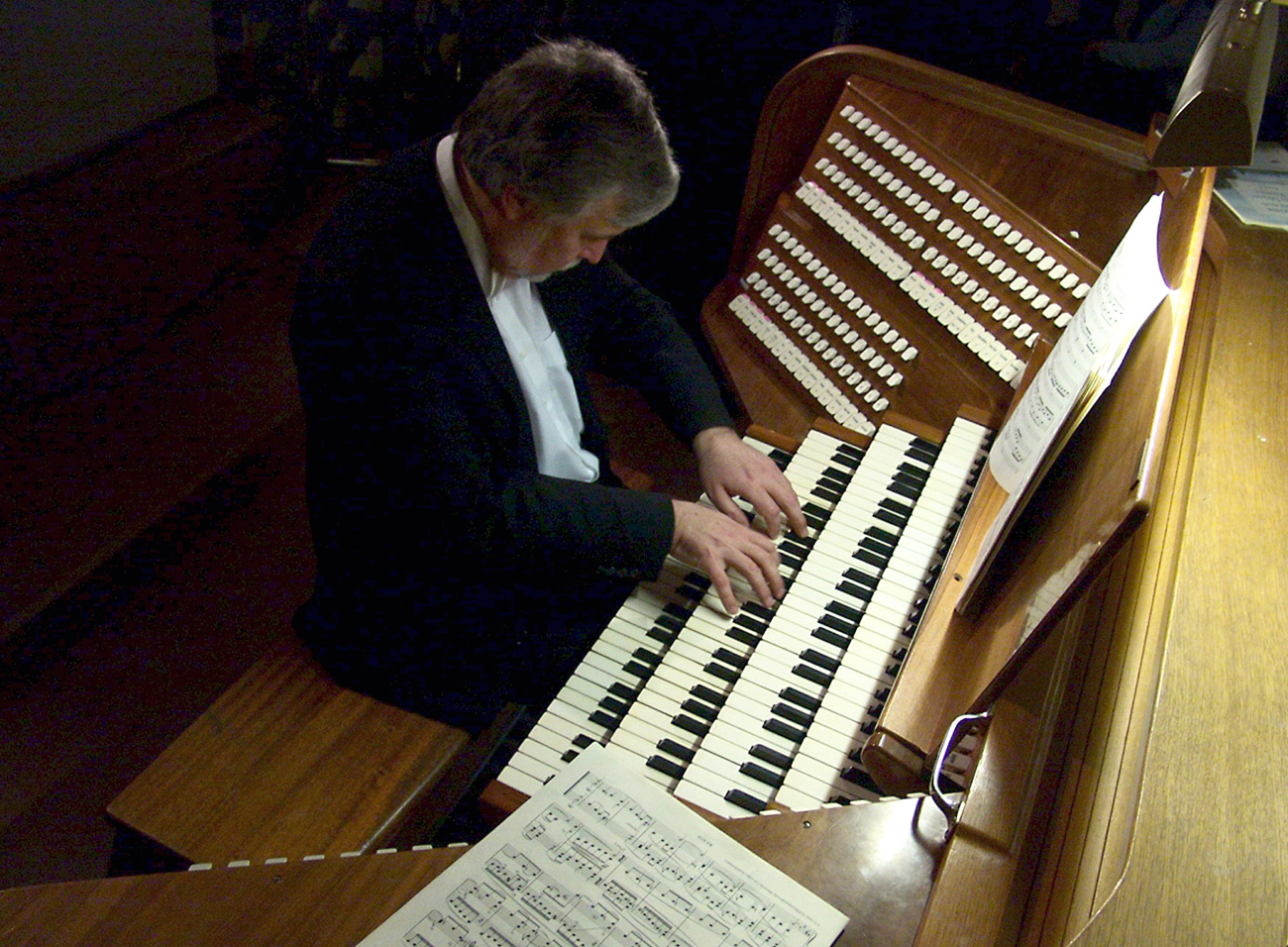 Alexander Fiseisky performs during the international sacred music festival at the Cathedral of the Immaculate Conception of the All-Holy Virgin Mary at Moscow's principal Roman Catholic church. Source: Ruslan Krivobok/RIA Novosti
Alexander Fiseisky performs during the international sacred music festival at the Cathedral of the Immaculate Conception of the All-Holy Virgin Mary at Moscow's principal Roman Catholic church. Source: Ruslan Krivobok/RIA Novosti
The historic Romantic organ made by W. Sauer in 1898 was installed in the cathedral in 2006, though before it belonged to St Michael’s Church in the Moscow district of Lefortovo. It miraculously survived the Bolshevik Revolution and for a long time was used in the Donskoi Monastery crematorium.
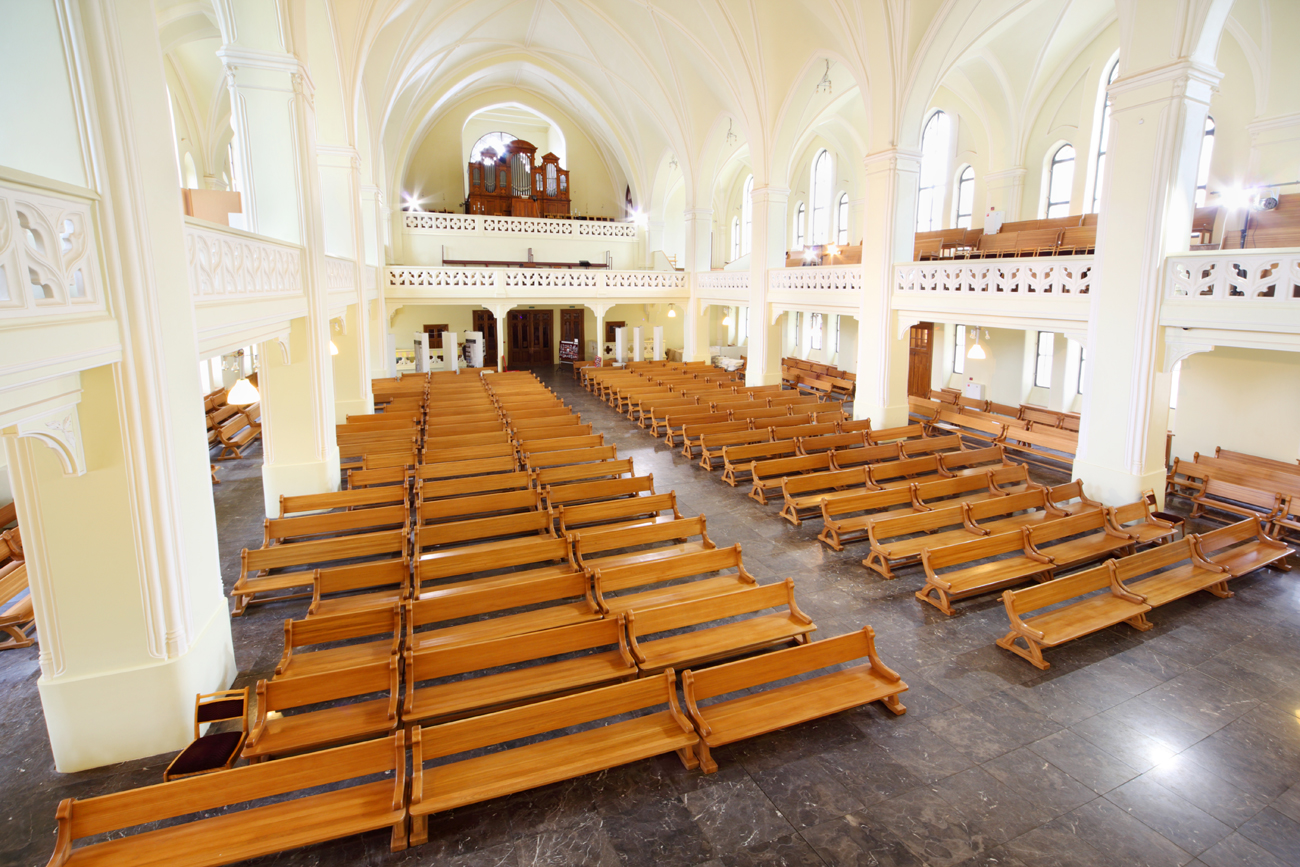 Hall and organ in Evangelical Lutheran Cathedral of St Peter and Paul Lutheran Cathedral. Source: Shutterstock/Legion Media
Hall and organ in Evangelical Lutheran Cathedral of St Peter and Paul Lutheran Cathedral. Source: Shutterstock/Legion Media
The cathedral became the main concert hall for the Belcanto charitable fund. In order to popularize organ music, members of Belcanto decided to provide visual effects and video installations to accompany every production held there. Both adaptations of works from popular composers and original modern organ music are played in concert here.
Concert at the St Peter and Paul Lutheran Cathedral in Moscow, Russia. Source: natamor1/YouTube
First published in Russian by Kommersant.
All rights reserved by Rossiyskaya Gazeta.
Subscribe
to our newsletter!
Get the week's best stories straight to your inbox